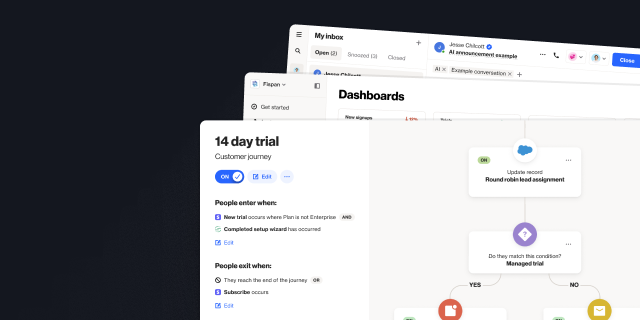How to set up Scores for leads and customers
Outline
- Introduction
- How to create and manage scores in Ortto
- 3 use cases for scores in Ortto
More like this:
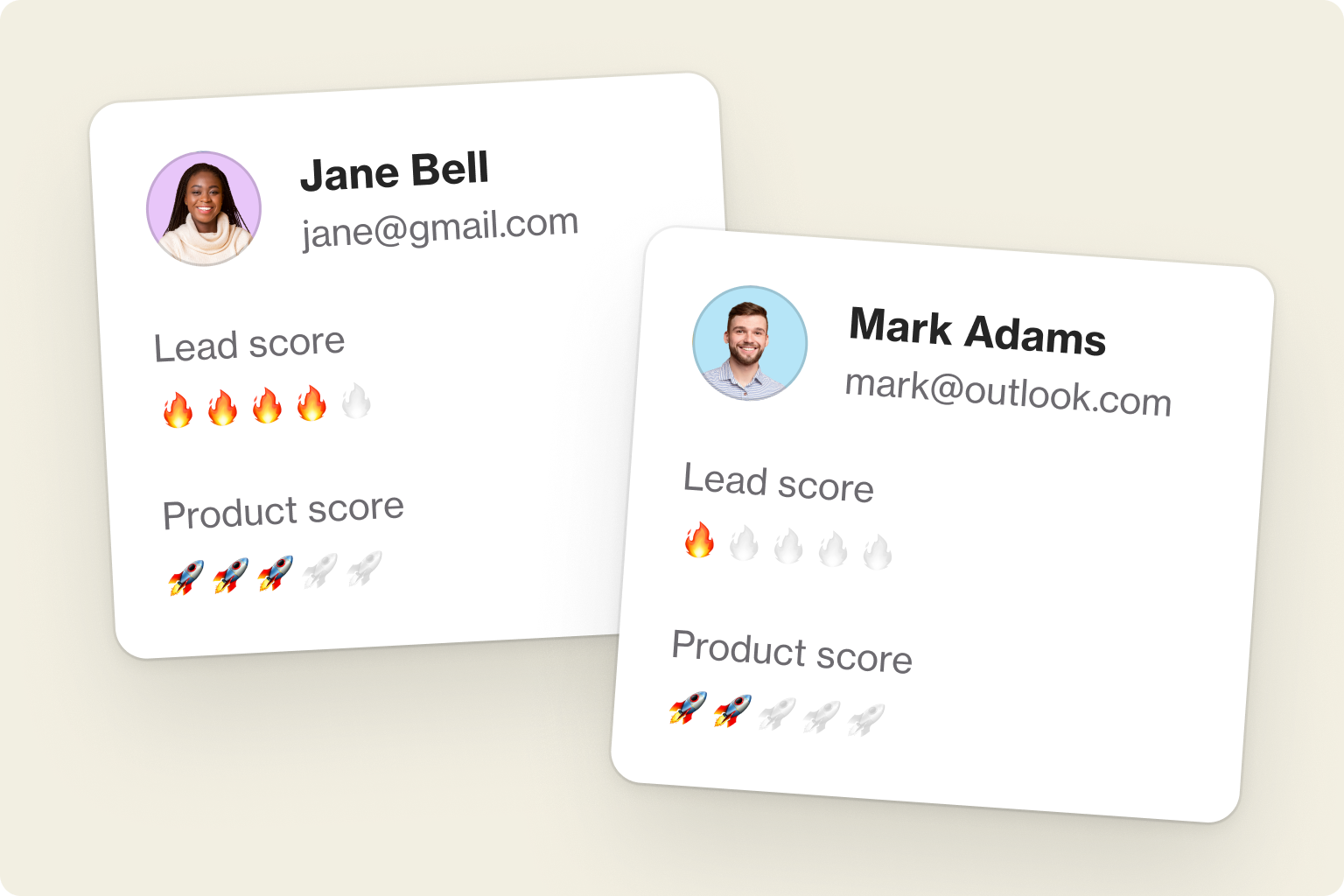
We are excited to announce a much-anticipated new feature in Ortto: Scores.
This new feature solves a major problem sales and marketing have faced in with traditional lead-scoring models. Where most scoring models apply a half-life to all criteria, Ortto's only applies the half-life to activity-based criteria. This means that any criteria applied with a filter, like demographic and firmographic information, does not degrade over time.
How to create and manage scores in Ortto
If you’re already familiar with Ortto’s Engagement score feature, you’ll be familiar with how scoring works. Essentially, scoring ranks products, customers, and leads according to a set of filters and activities from your CDP. This may include things like demographic or firmographic data, activities, or behaviors.
Setting up scores is simple, follow the steps below;
Go to Setup and select Customer data
Go to Scores
Click + New Score
Give your score a name, and select a score emoji icon as well as a Score half-life period. Note the half-life period will only apply to activities, not filters.
Add your score criteria by clicking + New criteria and selecting either a filter or an activity.
Assign a number of points (up to 500) based on importance
Click Create criteria
Continue until all criteria are loaded and switch your new score type ON.
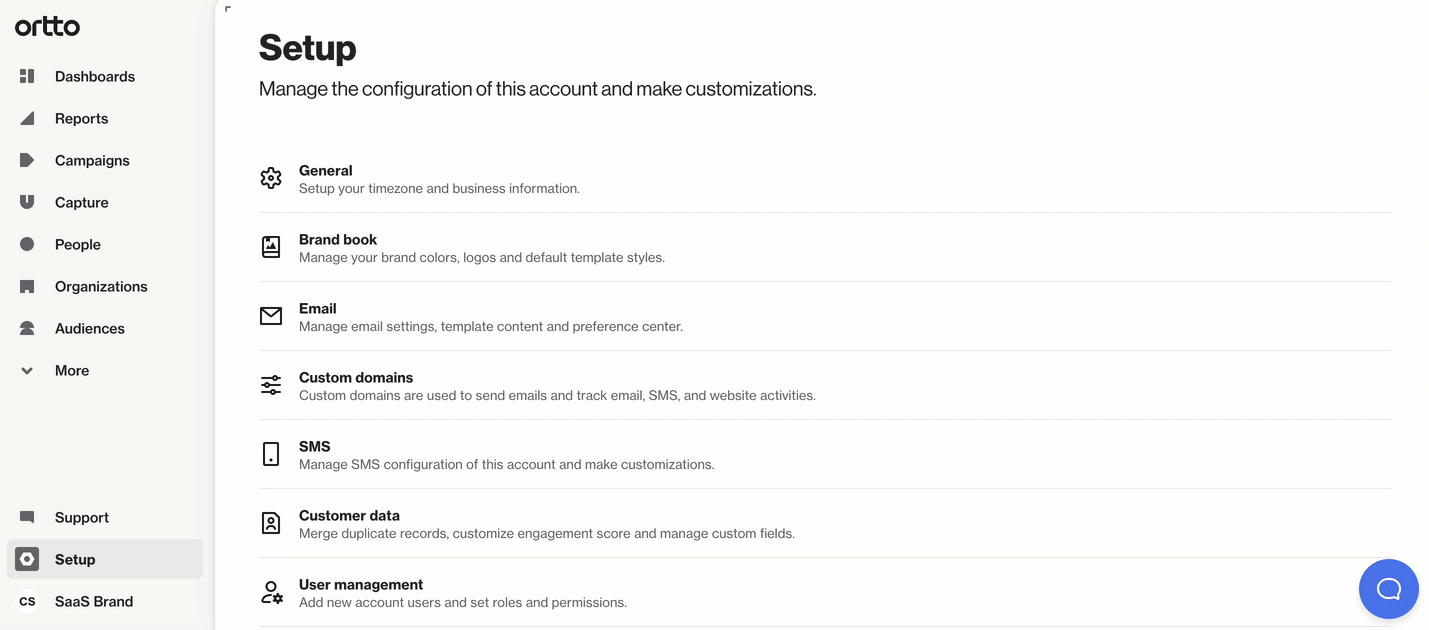
Once your scores are set up, Ortto will use the model to assign the customer, product, or lead a score out of five. This score will appear in the people section of your CDP as a number of emojis, making it incredibly easy to simply and quickly identify your best leads or customers. You can also use Scores in filters to build audiences, as entry and exit criteria in your journeys and playbooks, or in reports.
3 use cases for scores in Ortto
Our new Scores feature was set up to allow you to create scores based on the activities and attributes that matter to your business. They are highly customizable and can be used for just about any type of score. For example:
1. Lead scoring
In the lead phase of the customer lifecycle, we recommend setting up two separate scores for your leads:
Fit score
Use demographic, firmographic, or technographic filters (the half-life will not be applied to filters) to determine whether a lead fits your buyer persona.
Buyer intent
Use behavior-based data points with a half-life (this should roughly match your sales cycle) to determine whether your lead is nearing the decision-making phase of their journey.
For example, a fit score may include things like:
Firmographic information
Individual seniority
Technographic information
Geographic information
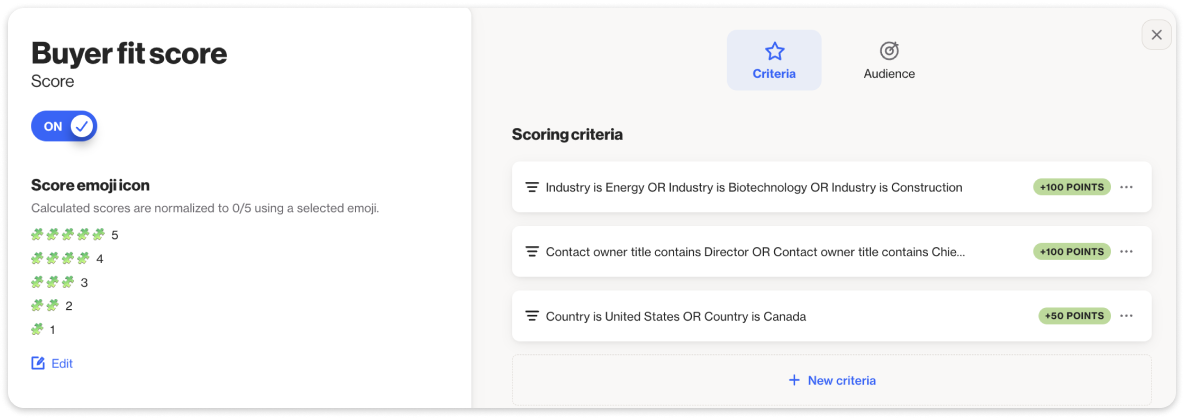
Since a half-life is not applied to filters in Ortto's scoring methodology, these evergreen pieces of information will not degrade over time.
Your buyer intent score will help gauge how likely the person is to convert. This may include behaviors and activities like:
Viewed pricing page
Attended webinar
Read customer story
Signed up for or watched a demo
Opened email in a lead nurture journey
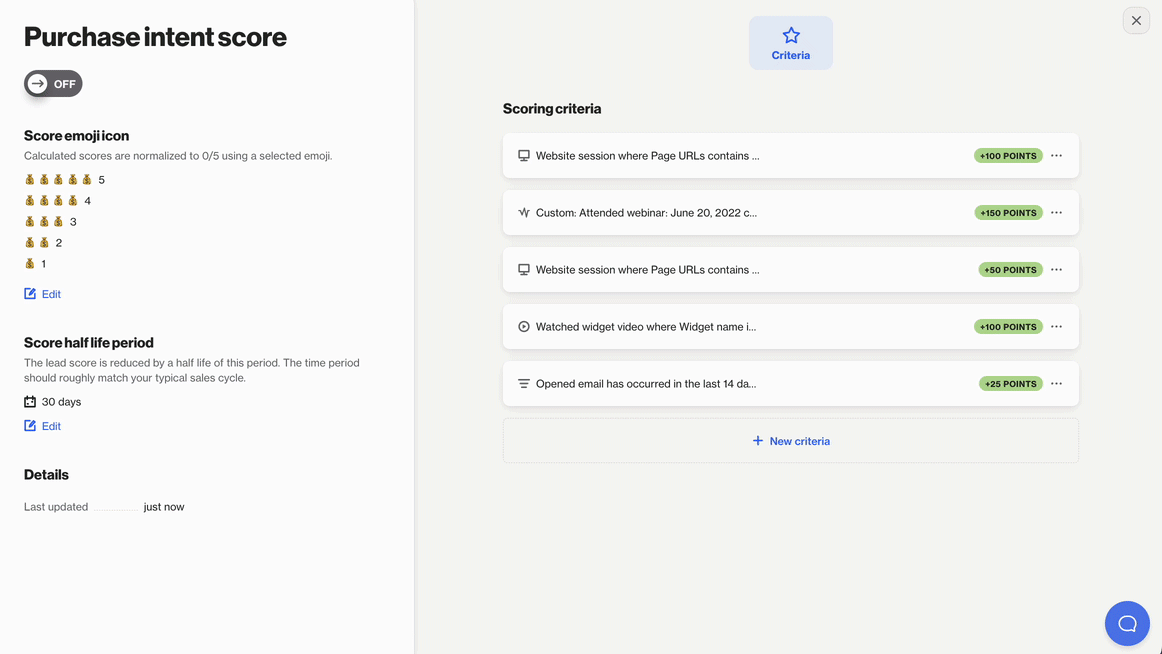
Since all activities are scored based on a half-life, the purchase intent score will depreciate over time to ensure recency.
2. Product engagement scoring
If you’re a SaaS company, measuring product engagement is essential to assessing users on a free trial, assessing churn risk, optimizing your product, and measuring the success of your customer engagement and onboarding journeys.
Our new scoring functionality will allow you to set up product activation or product engagement with ease. Let’s say you’re a SaaS company that turns screen recordings into how-to videos and you want to score each new user based on the product-qualifying actions they have taken throughout their onboarding period. Your product activation Score setup might look like this:
Created screen recording
Shared screen recording
Used AI voiceover
Opened email in onboarding flow
Responded to customer feedback pop-up
Engaged with chatbot
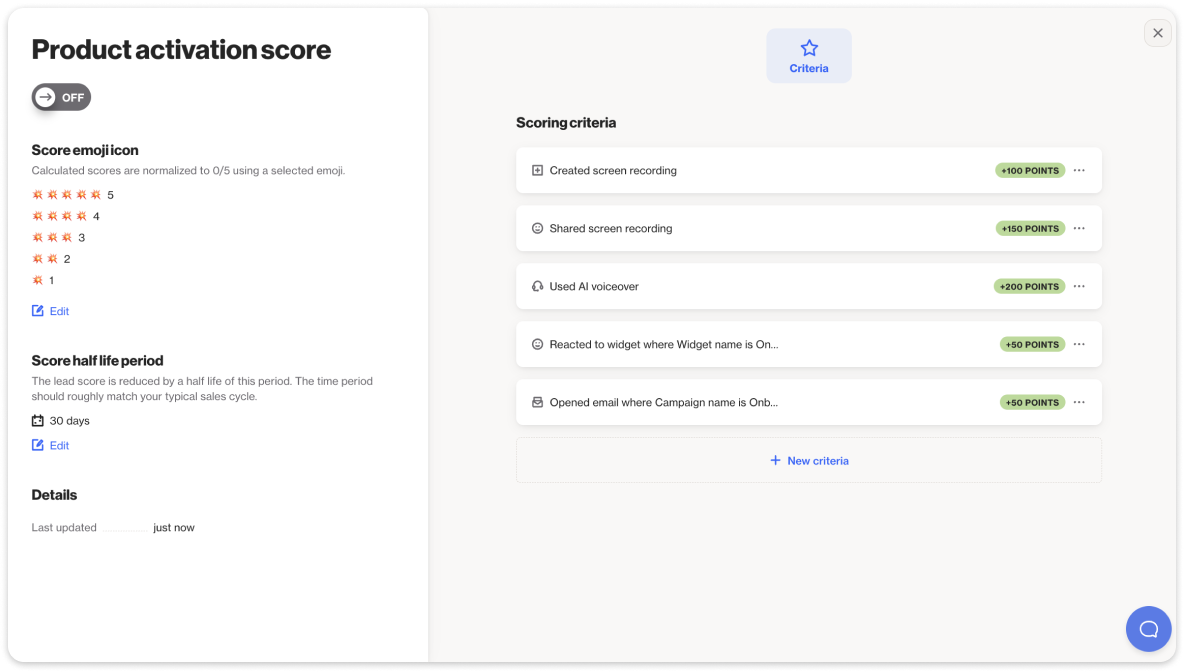
With this information, you can quickly assess which of your new leads are engaging with the product and therefore more likely to become a loyal customer.
In another example, you may wish to score product engagement on an ongoing basis. This could include a range of custom activities related to the use of specific product features. The time-decay model ensures recency on all user’s scores. This information can be helpful when assessing churn risk, identifying upgrade leads, or even finding customers who may be great case study subjects or brand ambassadors.
3. Customer scoring
If you’re already using engagement scoring in your account, you can use our new score feature to score customers based on loyalty, satisfaction, or experience. These scores may help you get a more granular understanding of where your product, support team, content and resources, and brand is winning, and where there’s room for improvement.
For example, if you wish to set up a customer experience score, you may use a range of filters and activities that are connected to the various touchpoints your customer has with your brand, including things like:
4+ star rating on chatbot interaction
Responded to NPS or CSAT survey 8+ rating
MRR, CLV, or average purchase price
Time as customer
Support tickets lodged and resolved

While surveys like NPS and CSAT are great for assessing customer satisfaction at a moment in time, a customer scoring model with a half-life on activities will ensure that you are able to get a real-time view of your customer’s overall experience with your brand.
Scoring is available in your Ortto account now.

Build a better journey.


“We were looking for a solution that was really easy to use, didn’t require a tech team, and would have a robust integration with Salesforce so we could trigger sales communications in a smarter way. Nobody else out there has what Ortto has.”

Try Ortto today
Build a better journey.

Product
Pricing
Solutions
Features
About
Resources
Ortto for
Templates
Integrations

